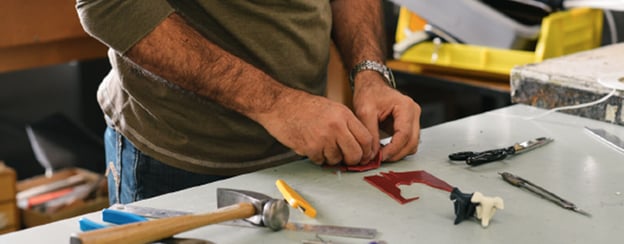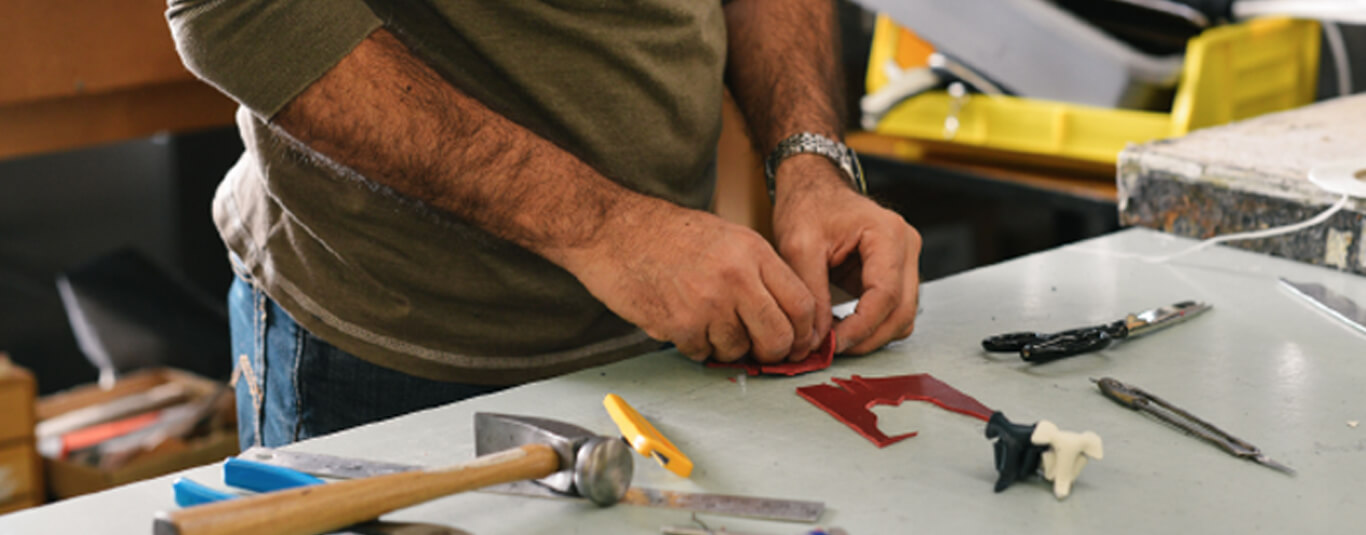I recently listened to an episode of Tim Ferriss's podcast with Reid Hoffman, former co-founder of LinkedIn, talking to Brian Chesky, the co-founder of Airbnb. Both businesses have reached amazing heights and have more than 100 million users each.
In that conversation, Hoffman made the point that sometimes the most painstaking, manual, and non-scalable things we do early on in business, are actually the most critical in setting yourself up for exponential growth.
This, my friends, is product development in a nutshell: the truly unscalable portion of your product's journey. This is where you're supposed to find yourself in the weeds, testing and retesting, fixing and re-fixing, and spending more time and resources than what would be sustainable over the long term.
But, it's all for the best cause: to uncover every single problem now, while you still can—before you find that your bumps in the road have become unscalable mountains.
This process, however painful, leads you to making revelatory product design insights and to do your best work.
I'll offer an example, one that Chesky shared about Airbnb, that really helped bring this point home for me.
After raising capital and making big promises to investors, the founders of Airbnb (Chesky and pal Joe Gebbia) found themselves focused heavily on global outreach and expansion instead of thinking much about their individual users. But then they met Paul Graham of Y Combinator, who asked them one very simple question: “Where is your business?”
They responded that the bulk of their business was in New York. Graham then asked, “So if your users are in New York, and you're in Mountain View—what are you still doing here?”
He told the founders to go to where their users are, and get to know them personally. Chesky made the argument that such efforts couldn't possibly scale. If they were going to be huge and serve millions of customers, how could they meet and speak to users individually? Graham told him that is exactly why they should do it now. He told the founders that this is the only time they'll ever be small enough to get to know their customers personally, and to create something that could speak directly to their needs.

“I'd argue that painstaking, handcrafted labor is actually the foundation of his success. In order to scale, you have to do things that don't scale.”
Reid HoffmanChesky and Gebbia followed Paul's advice to the letter. They went from Silicon Valley all the way to New York and started knocking on their hosts' doors. To make it worth their while, the founders hatched a plan that hosts couldn't refuse: to send a professional photographer to their homes to help hosts boost their listings for free. In true startup fashion, those photographers also just so happened to be Chesky and Gebbia.
These home visits became Airbnb's secret weapon. Through spending time with their customers, they learned exactly what worked and what didn't about their business model and the way their product was designed. They were able to ask their hosts, “Well, what if we did this instead? Or what about that?”
It's from those questions that the hand-crafted Airbnb experience was born. It's how profiles and user reviews became part of their business (and basically formed the backbone of what became the gig economy, so hats off to Chesky and Gebbia!).
No one starts off with 100 million users; you only start with a few. That's as true for your local coffee shop as it is for LinkedIn—and it will be for your products, too.
“If you don't personally love the product you're making, then you probably shouldn't be making it.”
Tim FerrissSo, consider that it's okay to hand-nurture every single relationship in the beginning—it's even smart. Once you prove you can win over the hearts and minds of your target customers with labor that doesn't scale, then you can turn your focus to doing things more efficiently.
How should you do it? Here are our suggestions:
Solve ONE Customer’s Problem, First
Too often, we think big and global too soon. We get caught up thinking about groups and target markets rather than individual Ideal Users.
Counterintuitive though it may seem, to design a business for growth, you have to stop thinking big, and start thinking small. Tim Ferriss takes this one step further by emphasizing that every business should have a guaranteed market of at least one (and by one, he means YOU): “If you don't personally love the product you're making, then you probably shouldn't be making it.”
Design With Empathy
In order to be a great product designer, you really have to get inside the head of your users. Where are they when they're using your product? What are their physical surroundings? What are they thinking about? What are they trying to do? What is their emotional state?
Walk a mile in their shoes. Experience your product as they would. Fight any knee-jerk reaction to feel this step is unnecessary, indulgent, or silly. Designing with empathy is about more than just asking a question or testing a result. As Chesky puts it: “If you are only A/B testing, you're not designing with empathy.”.
Far more powerful is to think deeply and experience the problem you're trying to solve firsthand. Time spent in the mind of your target customer is never time wasted. Good product design requires time spent experiencing the product just the way a customer would, then iterating from there to create a product they will love.
“Build something that 100 people love, not something that 1 million people kind of like.”
Brian CheskyFollow the Passion
You're looking for an emotional response from your users: an enthusiastic, “OMG, I've been looking for something just like that!” followed by, “Where can I buy one?” If you can't ignite real passion in a single individual user, you'll never find it in the market.
In the words of Chesky, “Build something that 100 people love, not something 1 million people kind of like.” If you're really solving a problem of theirs, they'll be grateful—and shout it from the rooftops. Remember, people don't talk about solutions they only kind of like.
Go to Where Your Customers Are
Remember the Airbnb founders' story. Chesky and Gebbia went to where their customers were, even though it was all the way across the country and resource-intensive to do so. Yet booking out stays as customers and spending time with Airbnb's hosts ended up being the magic key that unlocked the startup's winning formula.
So where do your customers hang out? How do they spend their time? Go there, be with them, and watch them engage with your product firsthand. You will no doubt glean information that no survey, A/B test, or remote focus group will ever capture.
Ask Well-Crafted Questions
Your product roadmap exists in the mind of your customers—it's only a matter of pulling it out of them. And the best way to do this is by talking to your customers and asking the right questions. The goal of these exchanges is to move past the polite question-and-answers phase, and get at what your users wish your product could do.
The question “How could I make this better?” might get your customers talking. Ask the more detailed question: “What could we change about our product that would make you run out and tell everyone you know about it?” and that's likely to generate deeper, more imaginative, and more instructive feedback. Not all of it will be practical or even possible, of course. But by asking evocative, open-ended questions, you might elicit product design possibilities that aren't even on your radar yet. Good questions and good answers will help you build a better, more exciting product.
Make Better Products
Ultimately, the time and energy spent on empathy, connecting with users, and asking good questions will mean nothing if you don't use the insights you've gained to make the best product possible. With so many products being cheaply made these days, don't add to the mediocrity with a product that just sells “well enough.” Winning in today's marketplace requires having a unique, high-quality product that's well-tested, has great market fit, and is made with care.
By focusing on the things that don't scale when you're just getting started, you'll gain the product design and customer-facing insights you need to build a better product, convert more customers, and grow your brand in the long run. Combine empathy and the in-depth customer knowledge that comes from doing the legwork, and you'll be more likely to design a product that works at any scale.
Production credits: Co-written by Sarah A. Lybrand, On the Sly Productions
